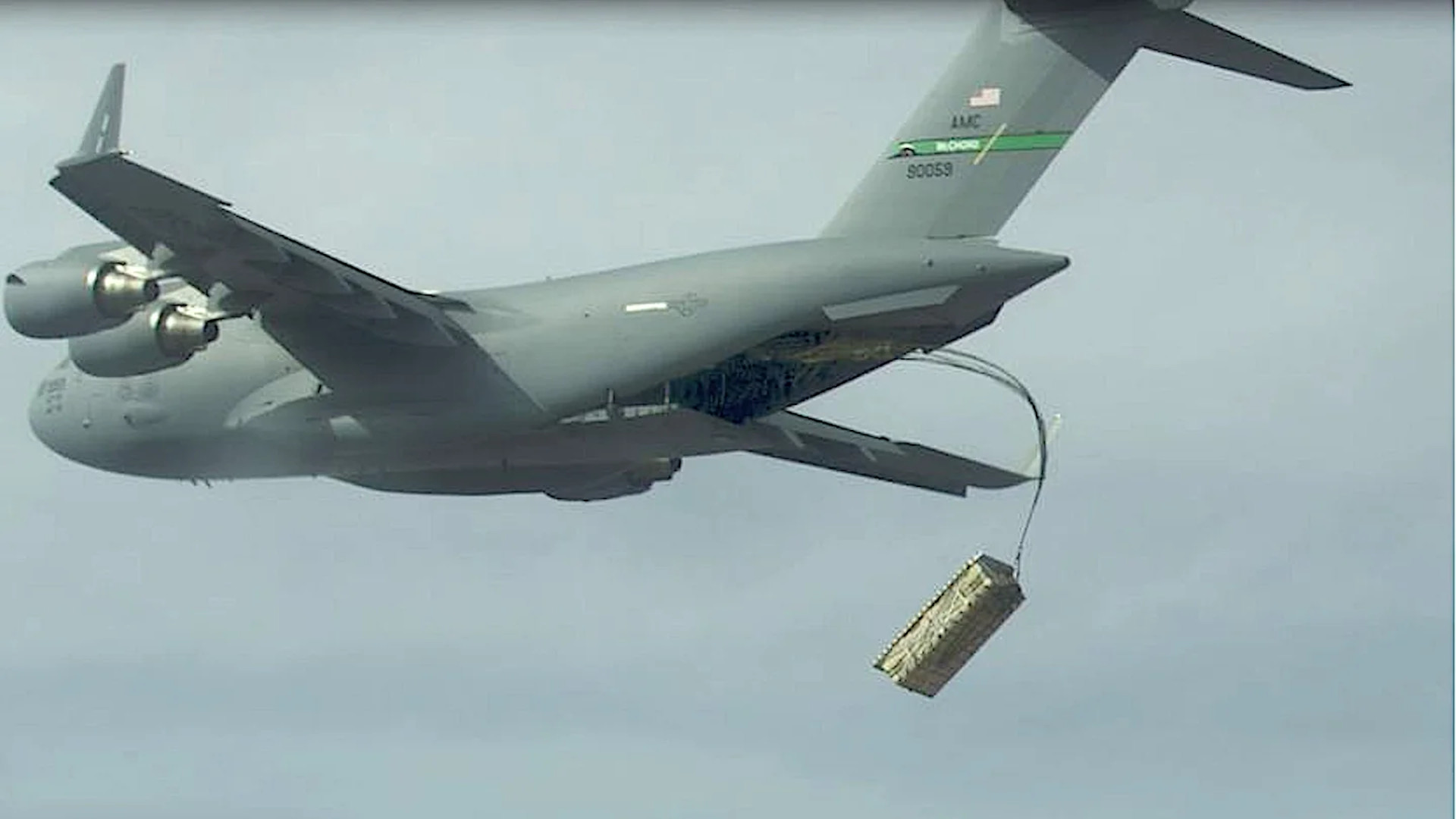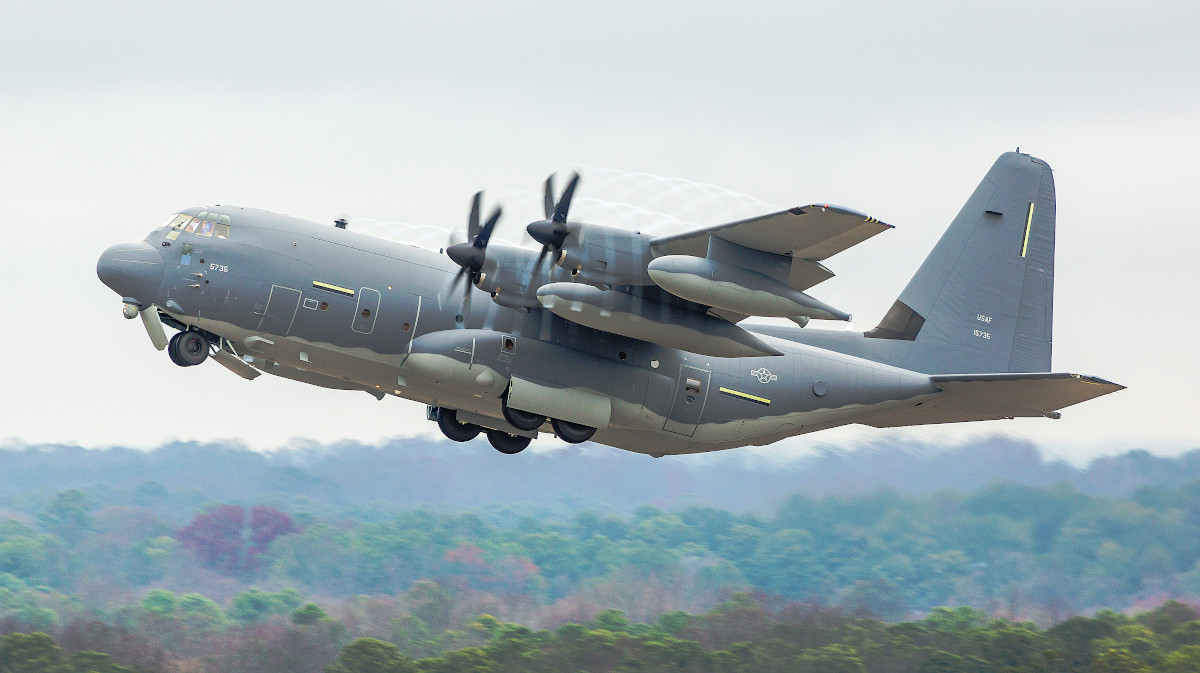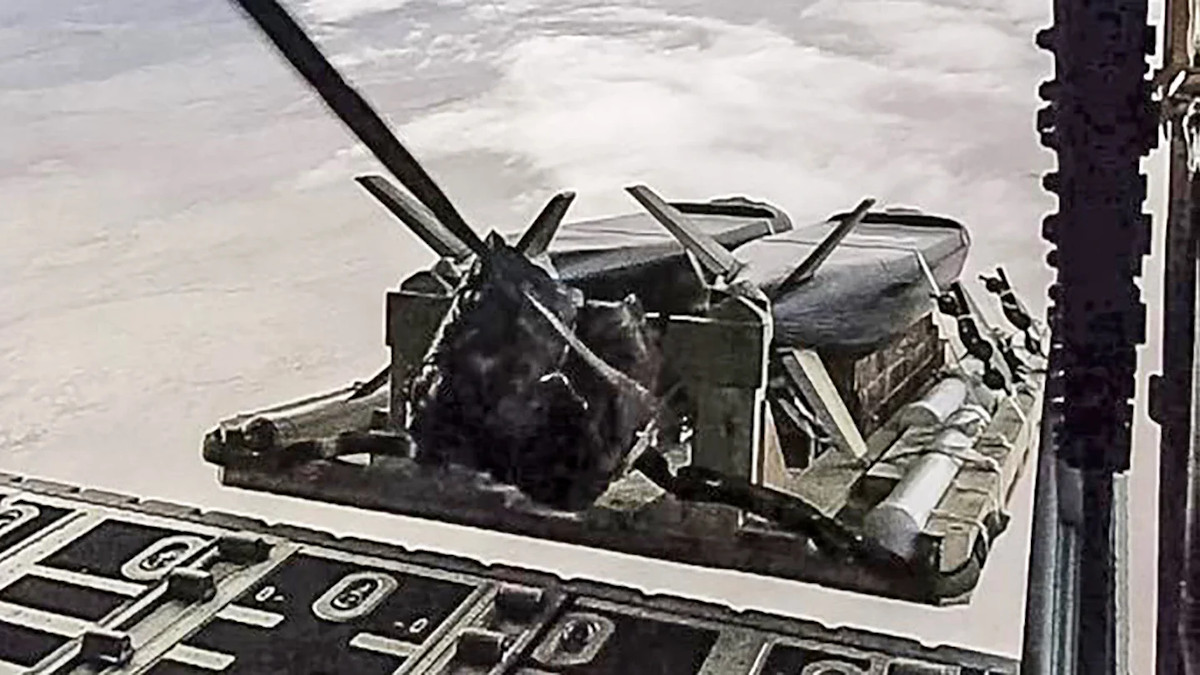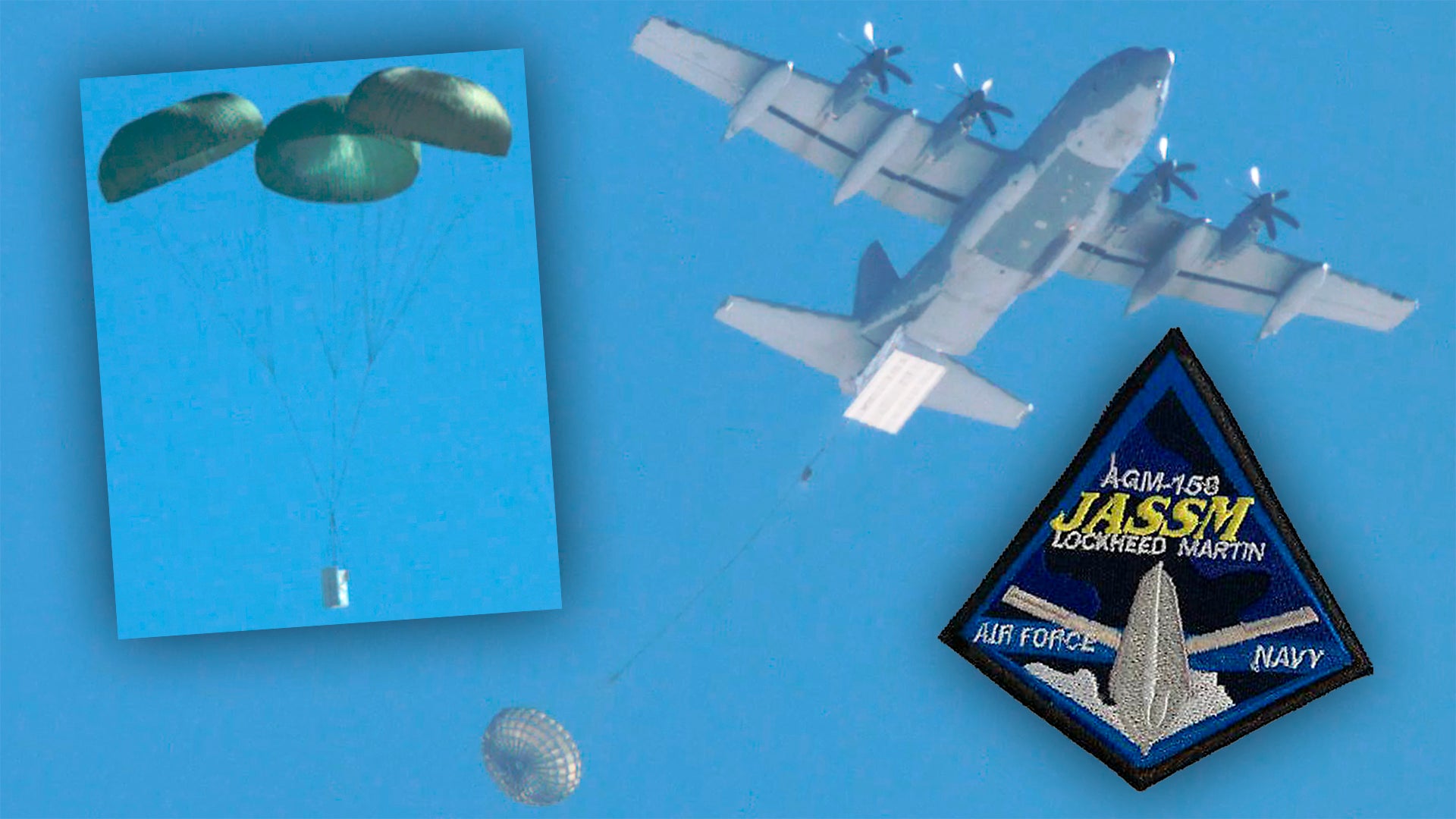A U.S. Air Force MC-130J Commando II special operations aerial refueler and transport plane simulated the launch of a pallet of AGM-158 Joint Air-to-Surface Standoff Missiles, or JASSMs, during a major exercise earlier this year. Though no actual missiles were launched, this test did allow the service to demonstrate the procedures, including transferring targeting information to the MC-130J via multiple other nodes, that it would use when employing a cargo aircraft transformed into an ‘arsenal plane’ during an actual operation.
The MC-130J’s simulated JASSM launches were part of the latest iteration of the biennial Northern Edge exercise, which took place in and around Alaska in May, but the Air Force only announced this test on June 4, 2021. The U.S. military, as a whole, regularly uses Northern Edge exercises as an opportunity to test are routinely used to test and evaluate new and improved capabilities and hardware, with a particular emphasis on communications and data-sharing.

“This enhanced capability can provide combatant commanders additional targeting flexibility and control in the prosecution of the high-end fight,” Dr. Dean Evans, the Rapid Dragon Program Manager at the Air Force Research Laboratory’s (AFRL) Strategic Development Planning and Experimentation Office, or SDPE, said in a statement. “Additionally, the retargeting methodology used is transferrable to other strike platforms, potentially making all JASSM-capable strike assets more lethal in an increasingly complicated and dynamic near-peer conflict.”
The service has already carried out multiple experiments involving airdrops of mock palletized munitions, including JASSM surrogates, from MC-130Js and C-17A Globemaster III airlifters, as part of a program now called Rapid Dragon, in the past year or so. In March, another MC-130J test dropped an instrumented test article representing a palletized launch system for JASSM missiles over White Sands Missile Range in New Mexico as part of the 2021 iteration of U.S. Special Operations Command’s (SOCOM) Emerald Warrior exercise.
During the latest demonstration at Northern Edge 2021, the Air Force Special Operations Command (AFOSC) MC-130J in question carried an “emulator” simulating a load of JASSMs, specially AGM-158B Joint Air-to-Surface Standoff Missile-Extend Ranger (JASSM-ER) variants. While airborne, the aircraft received targeting information for the weapons via a beyond-line-of-sight (BLOS) datalink from the Standoff Munitions Applications Center (SMAC) and prepared for the mock launch.

However, as part of the demonstration scenario, an unspecified off-board sensor identified a new target and relayed that information to the All-Domain Operations Capability-Experimental (ADOC-E). ADOC-E passed that information to SMAC, which then used it to retarget the simulated missiles onboard the MC-130J, all via BLOS links. It’s not clear whether the virtual JASSMs had already been “launched” by the point.
Based at Barksdale Air Force Base in Louisiana, SMAC is a joint-service stand-off strike planning cell situated within the Joint-Global Strike Operations Center (J-GSOC), which is led by 8th Air Force, the Air Force’s main unit overseeing bomber operations. The ADOC-E, which you can read more about here, is an experimental, distributed command and control architecture employed during Northern Edge 2021, with its main hub at Joint Base Elmendorf-Richardson in Alaska.
At its core, the Rapid Dragon concept centers on the idea of using airlifters as weapons trucks to provide additional stand-off strike capacity, especially during potential higher-end operations against near-peer competitors, such as China or Russia. This would also offer a lower-cost means of providing this added capability, especially compared to buying, operating, and maintaining larger fleets of traditional bombers.
“A Palletized Munitions capability could enable various airlift aircraft to employ a range of weapons en masse via a self-contained, roll-on/roll-off palletized system, and may offer an alternative way for the Air Force to bring more mass to the fight,” Dr. Evans, the Rapid Dragon Program Manager, had said after an earlier test of the concept last year.
It first emerged that SPDE was exploring this idea, which it also described as “a bomb bay in a box,” last year. This is, of course, not the first time the Air Force has considered the idea of employing transport aircraft as arsenal planes or the first time that service, as well as other air forces around the world, has used the airlifters to drop oversized munitions, for test and evaluation purposes and during actual combat missions.

In addition, while the Air Force, so far, has primarily been conducting Rapid Dragon testing with an eye toward launching missiles from the combat-proven and increasingly popular JASSM family, which also includes the AGM-158C Long Range Anti-Ship Missile derivative, it’s hard to see the concept not being readily adaptable to different munitions and other novel payloads. This could include swarms of networked munitions, which the Air Force is developing as part of its separate Golden Horde program, as well as autonomous drones with swarming capability. At least one earlier test involved the release of a pallet loaded with examples of a new munition design called the Cargo Launch Expendable Air Vehicles with Extended Range, or CLEAVER.

As Dr. Evans noted, the Rapid Dragon demonstration during Northern Edge 2021 also highlights work the U.S. Air Force, as well as the U.S. military as a whole, is doing with regards to the development of advanced networking concepts to support various aspects of future operations. Given that no actual missiles were launched in this particular instance, the fact that targeting data was communicated to an MC-130J flying over or near Alaska from a distributed array of nodes via a command and control center in Louisiana, thousands of miles away, may be the most impressive aspect of this test.
Separately, the Air Force has also been using Rapid Dragon to explore new contracting mechanisms and rapid prototyping and testing concepts that could help speed up the development and fielding of various new capabilities.
“Now, more than ever we must take a different approach to how we deliver capability to the warfighter,” Chris Ristich, head of SDPE, said in a statement following the Rapid Dragon demonstration at Emerald Warrior earlier this year. “Lengthy formal acquisition programs won’t deliver the Future Force we need, and Rapid Dragon demonstrated that through collaboration and well thought-out programs, we can rapidly field relevant capabilities to meet the demands of today and tomorrow.”
At present, SPDE plans to conduct additional drop tests in the coming months that will involve MC-130Js and C-17As releasing more complete prototype palletized launch systems. The goal is to conduct an actual live-fire test of the entire system before the end of the year.
At the same time, to prove Rapid Dragon is truly viable, the Air Force will also need to address questions about how it would balance operational airlift requirements with requests for additional strike capacity during an actual conflict. The service, as well as U.S. Transportation Command, has publicly discussed the risk of airlift shortfalls, especially in potential future high-end fights, in recent years. This, in turn, has prompted talk about novel logistics concepts, especially idea for how to provide additional capacity to support global strategic airlift requirements, to include a new U.S. Space Force-led program to explore the use of large rockets to deliver payloads anywhere in the world on very short notice, which you can read more about here.
Regardless, the mock launch of JASSM-ERs from an MC-130J during Northern Edge 2021, supported by information passed across great distances through various advanced networks, underscores how serious the Air Force is right now about turning the Rapid Dragon concept into a real operational capability.
Contact the author: joe@thedrive.com
